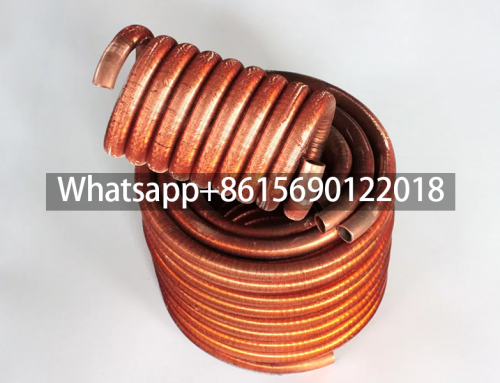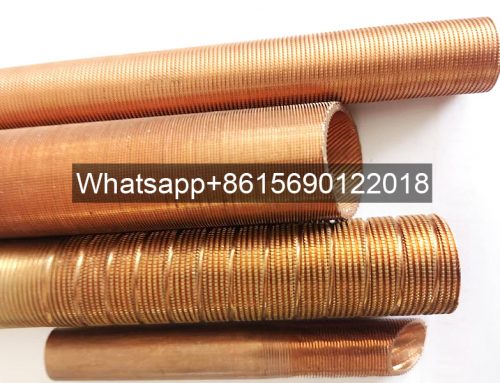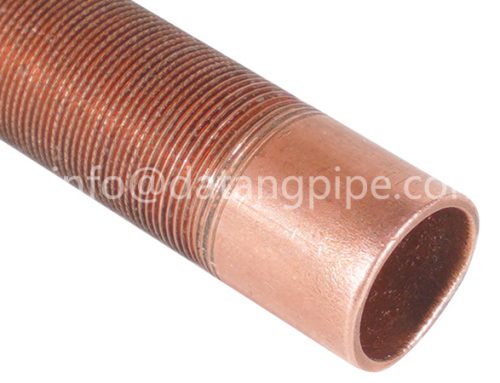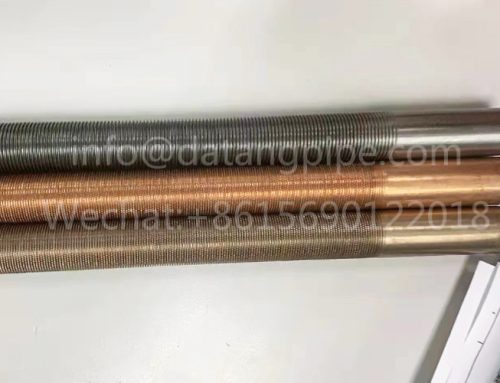Project Description
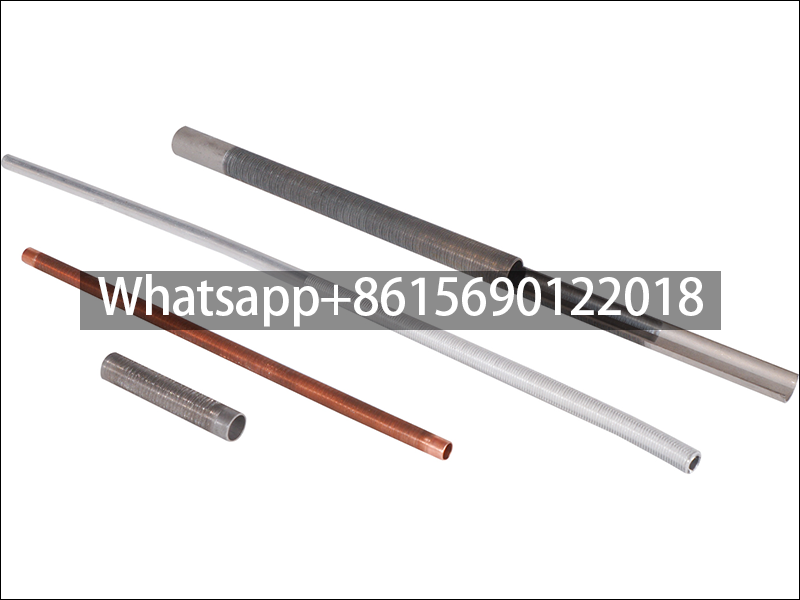
- Product Name: Low Fin Tube for Condenser | Integral Low Finned Tube
- Leave Your Message
What is a low fin tube for condenser?
Low finned tube for condenser is a heat exchange element that forms fins (fins) of a certain height, fin pitch and thickness on the outer surface of a light tube by mechanical processing. These fins increase the surface area of the tube, thereby improving the heat exchange efficiency.
Definition and use of low fin tube for condenser
Low finned tube is a heat exchange element formed by machining continuous spiral fins on the surface of a light tube. The fins increase the surface area of the tube and improve the heat exchange efficiency. Low finned tubes are widely used in condensers, evaporators and other equipment of air conditioners, and are an important part of these equipment.
Performance parameters of low finned tubes for condensers
An important performance parameter of low finned tubes is the finning ratio (β), which indicates the ratio of the total surface area of the finned tube to the surface area of the original light tube. The larger the finning ratio, the greater the expansion of the heat exchange area of the finned tube, and the enhanced heat exchange performance.
Condenser low fin tube production process
Low-fin tubes are usually produced by rolling method (three-roller oblique rolling). This method lines a core rod in the bare tube, and the tube material moves in a spiral linear motion under the drive of the roller blade, and gradually processes fins on its outer surface through the hole pattern composed of the roller groove and the core rod. The finned tube base tube produced by this method is tightly combined with the outer fin as a whole, with good heat transfer efficiency and anti-deformation ability.
Application field of condenser low fin tube
Low fin tubes are mainly used in condensers and evaporators, absorption refrigerators, oil coolers and other various heat exchangers in air conditioning and refrigeration equipment. In addition, they are also used in heat exchangers in thermal power plants and nuclear power plants, marine exchangers, gas turbine units and air coolers, diesel coolers, secondary coolers and various heat exchangers in waste heat recovery systems in the oil industry.
Condenser finned tubes are a high-efficiency heat transfer element, widely used in refrigeration, air conditioning, chemical industry and other fields. It consists of a base tube and fins, which are fixed together by welding or other means to form an expanded heat exchange area and improve the heat exchange efficiency.
As the main component of the condenser, the performance of the fin tube directly affects the heat exchange effect of the entire condenser. Therefore, it is crucial to choose the right fin tube material and processing technology. At present, the commonly used fin tube materials are stainless steel, copper, aluminum, etc., and the processing technology includes rolling, extrusion, high-frequency welding, etc.
In addition to materials and processing technology, the shape and arrangement of the fin tube will also affect its heat transfer performance. Common fin tube shapes include straight, corrugated, serrated, etc., and the arrangement methods include straight and forked. Different shapes and arrangements will affect the air flow and heat exchange effect, so it is necessary to choose according to actual needs.
When selecting fin tubes, it is also necessary to consider its compatibility with other components. For example, the diameter and length of the fin tube need to match the other components of the condenser to ensure smooth air flow and good heat exchange effect. At the same time, the installation and maintenance of the finned tubes also need to be considered to ensure their long-term stable operation.
Condenser finned tubes are indispensable heat transfer elements in the fields of refrigeration and air conditioning. In order to obtain efficient heat exchange effects, we need to select appropriate finned tube materials, processing technology, shapes and arrangements according to actual needs, and pay attention to the matching with other components. At the same time, installation and maintenance are also important links to ensure the long-term stable operation of finned tubes.


